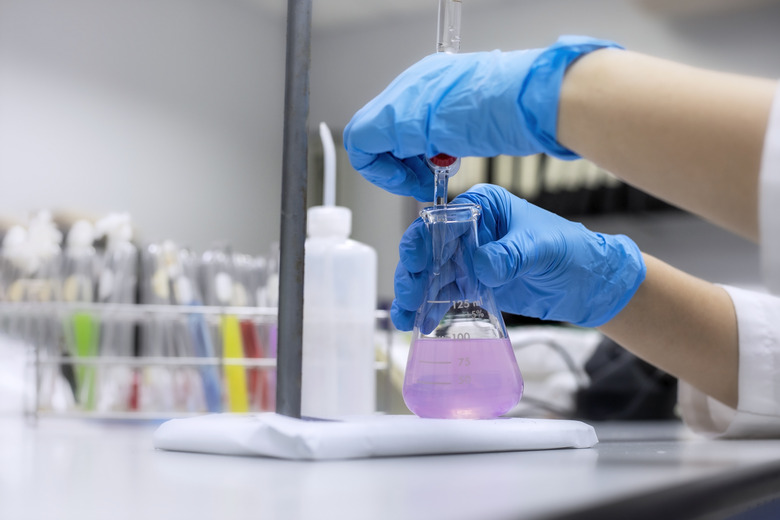Definition Of Automated Titration
Titration can be a long and arduous task especially if you need to do it repeatedly. The automated titrator has solved many of the problems that make this task so tedious.
Definition of Titration
Definition of Titration
According to "General Chemistry: Atoms First," a "titration is a procedure for determining the concentration of a solution by allowing a carefully measured volume to react with a solution of another substance (the standard solution) whose concentration is known."
Chemical Reactions
Chemical Reactions
Chemical reactions when balanced correctly provide a convenient relationship between the things reacting together (called the reactants) and their products. This relationship is a necessary factor in a titration.
Manual Titration
Manual Titration
Performing a titration manually can require skill and time. The standard solution (that is, the one you know everything about) can be reacted with the other reactant (the one you wish to know the concentration of) to produce a particular amount of product. This method depends heavily on your eyes (watching for color change) and on the accuracy of your measurements.
Automated Titration
Automated Titration
The whole process of titration is made much easier by making it automated. You simply add a predetermined amount of reactant and the machine will add the other reactant and measure the products to find the end point.
Benefits of Automated Titration
Benefits of Automated Titration
Many samples can be done in no time at all. The accuracy is increased due to the finely calibrated computer instead of your eyes. The amount of hands-on interaction is drastically reduced.
References
- "General Chemistry: Atoms First;" McMurry, John E.; Fay, Robert C.; 2010
Cite This Article
MLA
Carlson, Philip J.. "Definition Of Automated Titration" sciencing.com, https://www.sciencing.com/definition-automated-titration-5833327/. 5 January 2010.
APA
Carlson, Philip J.. (2010, January 5). Definition Of Automated Titration. sciencing.com. Retrieved from https://www.sciencing.com/definition-automated-titration-5833327/
Chicago
Carlson, Philip J.. Definition Of Automated Titration last modified August 30, 2022. https://www.sciencing.com/definition-automated-titration-5833327/
